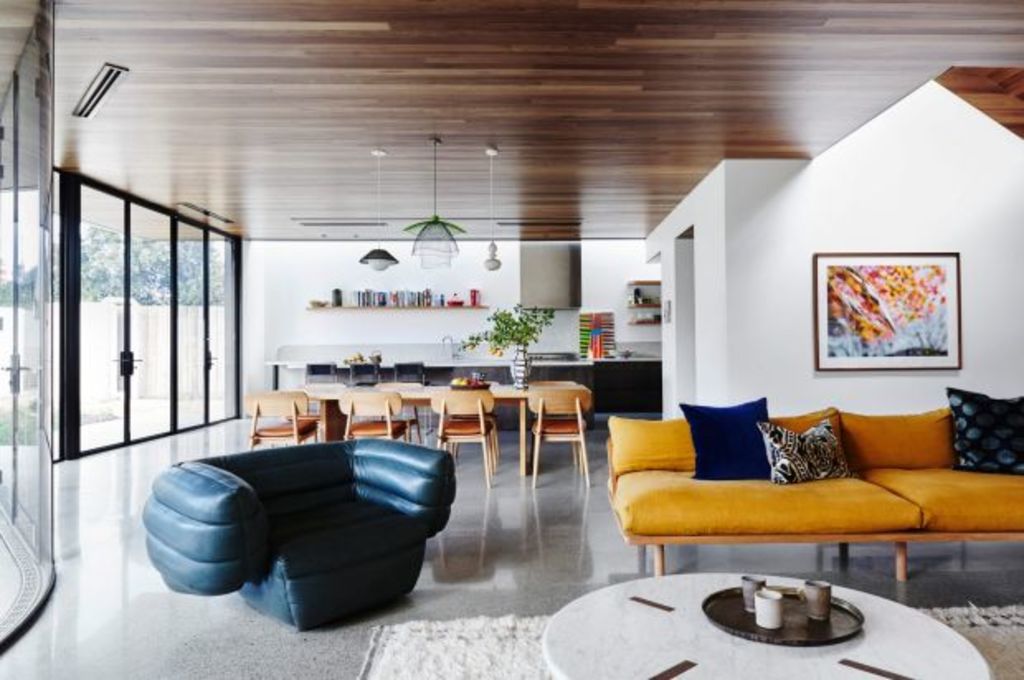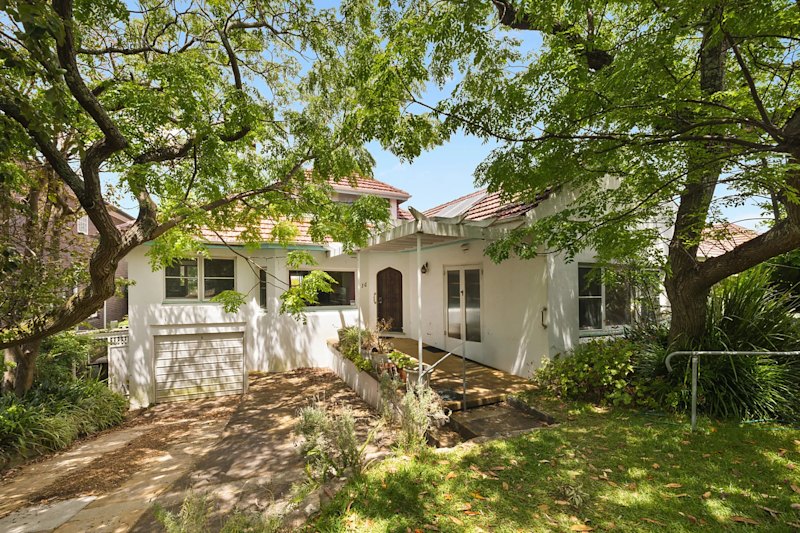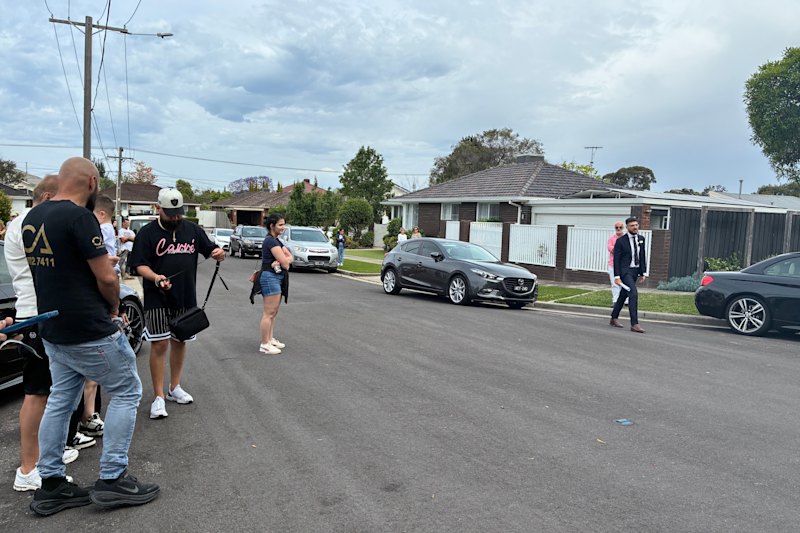Perfecting the imperfect

The only predictable of fashion – whether in clothing, architecture, interior design or homeware – is that at a certain point of trend saturation, it will do an about-face and proceed in the reverse direction to the most recent, popularly subscribed cycle.
So it was that for their first Melbourne commission, the sassy Sydney interior designers Amber Road received the following brief for specifying finishes and furnishing a four-bedroom 1930s house in the south eastern suburbs that had been given a curvaceous and streamline moderne-referencing rear extension by young local practice Folk Architects: The client didn’t want it to look like someone had designed it.
“They liked the look of old and new (as a combination), and we like that too,” co-director Yasmine Ghoniem says. “And they had a modest budget. So we really had to pick and choose where to spend money.”
Looking over the house, Amber Road saw the stunning timber ceilings. “They were so strong that we had to be careful what we put into the spaces,” she says.
Neither did the designers want to do anything that looked too much like mimicry of the nautical-inspired period, Ghoniem says.
Instead of referencing the late era deco in form, “which could have been tacky”, they were inspired by the colours. That guided their choice towards keynote ochres and teal blues though the rooms and in the introduced furniture, curtains and rugs that are all different and of highly textured wool.
“Some are antique, some were custom-made, some have strong ethnic colours and patterning,” Ghoniem says.
“In open-plan living, which is made of such solid (concrete) materials, the rugs were an interesting way of zoning and anchoring each room.”
Being so textural, “they were also a great way of absorbing sound”. That the mainly Kulchi (Moroccan-style) rugs “don’t look perfect”, Ghoniem says, introduces the human element. “It’s important that they don’t look perfect.”
Dealing with a limited budget, Amber Road applied a formula of occasionally spending big, for example on the unmissable blue leather armchair: “beautiful custom leather that ages really well” and that, with a very slight deco reference, gives grounding to the living room.
The chair was made by the Italian firm Baxter and took 14 weeks from order to delivery. Ghoniem loves it because “it looks like it’s got open arms extending for a family group hug”. It’s also soft, as is the casual three-seater couch by emerging Melbourne designer Pop & Scott.
Mixing more expensive elements with those from emerging practices was a chance to support local designers while staying on budget and minimising the “designed” look.
“It’s all very non-matchy matchy,” she says.
The apparently random arrangement of three very different light fittings grouped above the dining room table is a case in point.
“They’re only linked by their colours,” Ghoniem says. “Again we felt that was something that would be very non-stylised and more fun.”
And so on throughout Deco House there is an easy, unselfconscious ambience such as you might find in a multi-generational family holiday house that has accumulated a random collection of furniture and objects from all sorts of eras and personalities. In one of the children’s bedrooms a $300 cane bookshelf stands beside a deep blue drop of heavy linen curtaining.
The look was hard to achieve and in some ways, Ghoniem admits, “it went against the grain of everything we’ve been trained for”. “But it was great fun to make a place look so ‘not designed’. It was really liberating.”
And anyway, Ghoniem confesses: “it’s kind of how I do it for myself in my house. Nothing goes together.”
We recommend
States
Capital Cities
Capital Cities - Rentals
Popular Areas
Allhomes
More
- © 2025, CoStar Group Inc.







